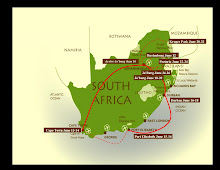My itinerary noted the day was one of the coveted free days on my trip. I did not have to travel, there was not a game to go see, in fact there was nothing planned for June 19.
It was in that absence of activities that I decided to go to the Apartheid Museum in Johannesburg. This country, and the city of Gold in particular, has a dark history of racism and segregation that South Africans tell me is still being cleansed from society.
Apartheid is at the fulcrum of the past that South Africa proudly displays in history museums as opposed to its statutes.
As someone who was born after the most violent demonstrations against the practice, in kindergarten when Nelson Mandela was released from prison and nine-years old when South Africa held its first democratic election
Apartheid was an opaque ideal that I never understood.
Saturday’s trip to a museum depicting South Africa’s inhumane divisions clarified all the news reports, books and other information I consumed about apartheid growing up.
It was a 150 minutes of balancing stoic emotions with utter shock at the 40 years of minority rule, the undercover murders of political protestors, the division of communities, the reservation of well-paying jobs for whites only and the list of 148 laws the country established between 1948 and 1990 directly, or indirectly, segregating the people and resources of South Africa.
Immediately visitors are reminded of the divisions that gripped South Africa. Every entrant is given a black card with white words that says either “white” or “non-white” in English and Afrikaans. Those cards determined which entrance someone entered the museum.
The cards are given to entrants at random: hence the five-minute walk through the entry being the only time in my life I have been classified white!
Pictures were not allowed inside the museum. People broke that rule, especially to take a picture of the Johannesburg skyline in the background.
(The only time I allowed myself a chuckle during my afternoon trip was when I took a picture of a group of six people—four white people, a black man and an Asian woman arms locked and smiling—with the Joburg skyline in the background.)
The museum provided a 15-minute video of the history of South Africa, which served as a backdrop for how a distinct minority could rule union so forcefully.
From there, I spent the next two hours reviewing newspaper clippings, video clips, pictures and other artifacts from the apartheid era. Unable to take pictures I scribbled as much as I could feverishly in a notebook so I would etch my own history about apartheid.
The stain of apartheid is still being undone. Until it is, the legacy of such an inhumane practice can be reviewed in a museum — a place befitting the past.
Subscribe to:
Post Comments (Atom)



No comments:
Post a Comment